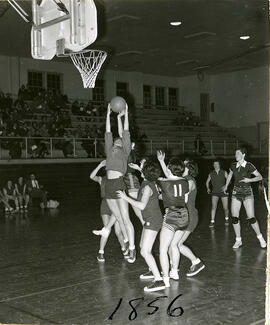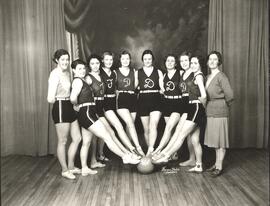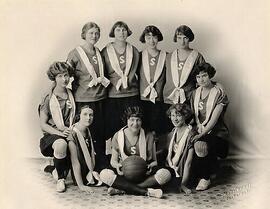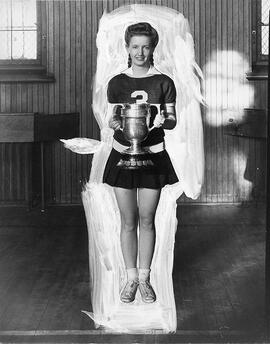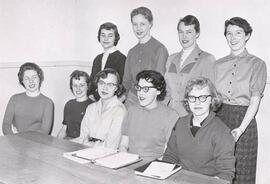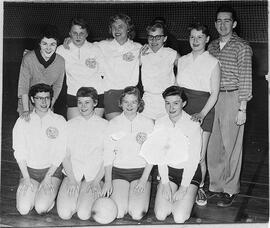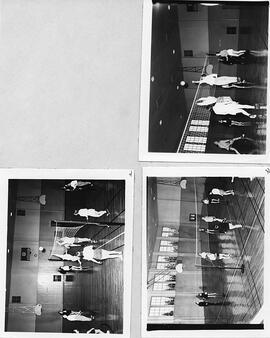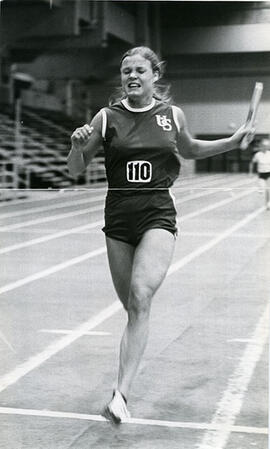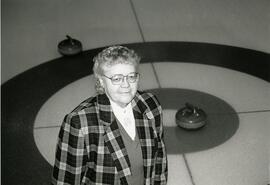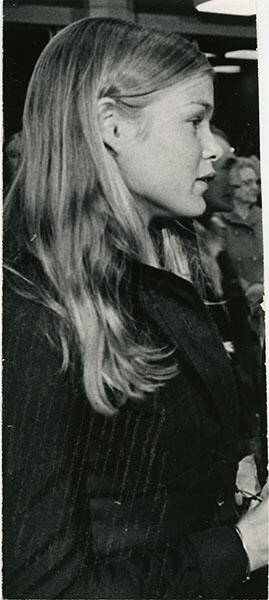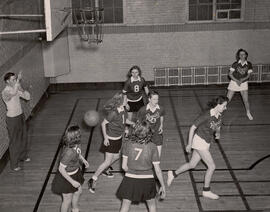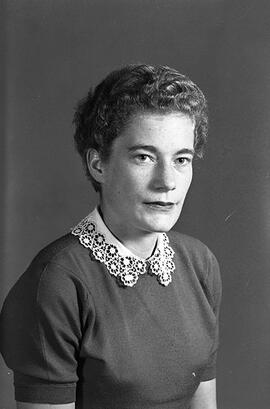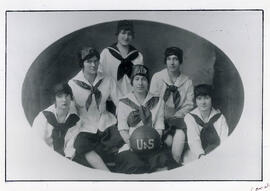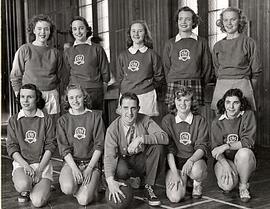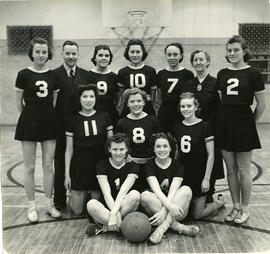Elevated view of Emily Farnham, Registrar's Office, standing on a sheet of curling ice.
Bio/Historical Note: Emily Blanche Farnham was born in 1937 and grew up in Tisdale, Saskatchewan, where she was introduced to curling by her dad. She moved to Prince Albert in 1956 and worked at the Bank of Montreal, transferring to Saskatoon in 1962. In 1964 Farnham began a 35-year career with the University of Saskatchewan, working in the Dean of Arts and Science Office, the Office of the Registrar and the College of Dentistry. Farnham retired in 1999. She was an avid curler and a member of the Nutana Curling Club for over 35 years. She was the first woman president of her club and served on the board of directors for several years. In addition to her competitive curling Farnham was involved administratively at various levels - club, city, provincially and nationally. She served as a volunteer on many bonspiels and national competitions. In addition to competing at the city, northern and provincial play downs, she competed at the national level in one women’s and four senior women’s competitions.
Farnham and her team of Linda Saunders, Pat McBeath and Donna Collins from the Nutana Curling Club in Saskatoon, dominated the women's curling scene during the 1973-1974 season, capping the year off by winning the 1974 Macdonald Lassies Championship, Canada's national women's curling championship (and forerunner to the Scotties Tournament of Hearts). During the 1973-74 season the team won four major cashpiels in Saskatchewan before winning the provincial championship and representing Saskatchewan at the 1974 Macdonald Lassies Championship. Farnham had tried unsuccessfully for 13 years before winning the Saskatchewan provincial championship. At the national championship her rink went undefeated, winning all nine of their games en route to the national championship. It would be the sixth championship in a row for rinks representing Saskatchewan. Team Farnham won 118 of 120 games over the course of the season, losing just two games – one practice game to a men's team, and one game in the Northern Saskatchewan playdowns. In 1989 Farnham became the first woman to win the Canadian senior curling championship after having previously won the national women's championship. Farnham and her rink of Mary Todarchuk, Mary Heidt and Arlie Ellsworth won the seniors championship that year for Saskatchewan. At the national championship the team finished the round robin with a 7-3 record, and then had to win a tiebreaker, before winning two playoff games to claim the championship. Farnham and Heidt were also members of Team Saskatchewan at the 1988 Canadian senior championship, where they finished with a 5-5 record. Farnham won another provincial seniors title in 1991, and lost in the finals of the 1991 national championship. She was particularly proud of being voted by her peers for the all-star skip award at the national level on three occasions. The 1973-1974 Farmham rink was inducted into the Saskatchewan Sports Hall of Fame in 2000 and the Saskatoon Sports Hall of Fame in 1993. Her 1989 senior team was inducted into the Saskatoon Sports Hall of Fame in 1993 as well. Farnham was inducted into the Canadian Curling Hall of Fame as a builder and player in 1993. She was also a member of the Saskatchewan Curling Association Legends of Curling Honour Roll.
Farnham also played golf recreationally, playing at Greenbryre Golf Club in Saskatoon for many years. In 2007 Farnham and her wife of 33 years, Sandi Sheppard, moved in Airdrie, Alberta, to be closer to family. Emily Farnham died on 20 November 2021 in Airdrie.



